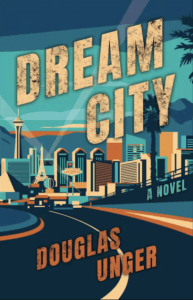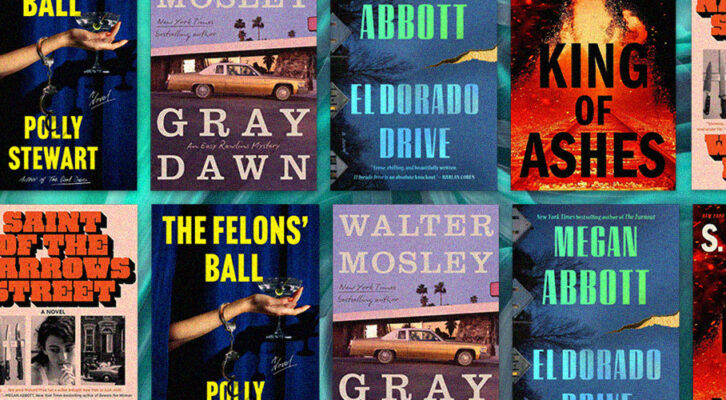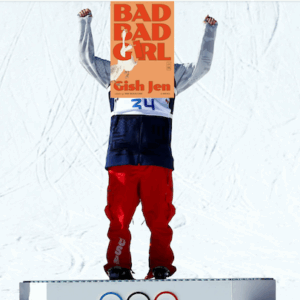
Impulses, Sources, Trajectories: Douglas Unger on Discovering Why You Write
“What kind of writer do I want to be? Where does my writing come from?”
This first appeared in Lit Hub’s Craft of Writing newsletter—sign up here.
Self-discovery is one of the essential rites of passage toward maturity and later mastery for writers. Part of this artistic self-knowledge can be achieved by developing self-awareness through self-appraisal of one’s origins, impulses and sources necessary to answer the most basic artistic questions: What kind of writer do I want to be? Where does my writing come from? Why am I writing?
Once a writer can articulate some answers (and these answers will change over time, with life events, and with artistic failure or success), only then can the writer best determine the trajectories of stories, novels, essays, and of a literary career. Discovering one’s impulses and sources (artistic self-knowledge) is essential for answering these questions. Jean Paul Sartre’s What Is Literature? (translated by Bernard Frechtman) poses similar inquiries. Sartre writes of “a pact between freedoms” and of the writer as making an “appeal” to a reader to engage in this pact as a mutual striving for freedom. His answers to the question why write? are inspiring. We can hear in them, too, some of the relief and ebullience in his reaffirmations of humane values after the defeat of Nazism and its horrors in World War II (also, one can hear an echo of the call to the barricades during the French Revolution). For Sartre, creative sources must be political. When we write, he states, we “bear the responsibility for the universe.” (p. 55). As grandly overwhelming as this statement is, this motive, which Sartre asserts should also appeal for change, can help reveal our sources.
Still―how can we know? How do we arrive at this self-knowledge of our sources?
Self-examination is required, much of it specific to the story or novel in the process of the writing: What is its impulse? What is its trajectory? Where does it want to go? And why?
The poet Allen Grossman (MacArthur Fellow, author of the moving collection, The Bright Nails Scattered on the Ground: Love Poems, among at least twenty or so other books) lectured and wrote about creative impulses and sources. Like Sartre, Grossman offered for our contemplation and self-examination a dialectic―two opposing poles, like two battery terminals between which we might sense the currents of our deeply human motivations for making art.
In his master lecture at the Warren Wilson Low Residency M.F.A. program in Swannanoa, N.C., in January, 1989, Grossman expressed two generic sources (or two poles) metaphorically by drawing from Greek mythology, defining one pole as the Orphic and the other the Philomelic. Grossman meant these concepts more as artistic tendencies rather than absolutes. Briefly and too simply described (with apologies to the poet’s memory), the Orphic impulse seeks to evoke a pure, absolute beauty in language, with a poetic music, as in the myth, so transporting that it can cover over and serve as an antidote to and escape from the hard, grueling, too often unsatisfying tasks and challenges of our daily lives.
The Orphic source (or tendency) to pursue high art aspires to such mysterious and enchanting beauty that it has the power to drown out the songs of the Sirens, saving the Argonauts from shipwreck (as Orpheus does in Homer). A more existential way to describe this tendency in art is that it either covers over or compensates for the fundamental terror of our existence. We achieve flight from that horrifying “ground of being” Friedrich Nietzsche wrote about in The Birth of Tragedy from the Spirit of Music (which proposes an Apollonian-Dionysian dialectic as sources for art that resonates with Grossman’s Orphic-Philomelic duality).
Self-examination is required, much of it specific to the story or novel in the process of the writing: What is its impulse? What is its trajectory? Where does it want to go? And why?
The opposite source (or impulse) to the Orphic is the Philomelic―the passionate drive, even obsession, to express an injustice, a crime, or a violation, either suffered individually or by the collective suffering of a family, tribe, race, nation, or people. Philomelic writing is an outcry borne of pain, writing that demands community awareness and social change, or at least that inspires acknowledgement of an injustice or a moral failing that might shift the behaviors of readers.
In the classical Greek model, as the story goes, Philomela is violated and raped by her brother-in-law, King Tereus, who then cuts out her tongue and sends her off into exile so she might never expose his crimes. Unable to speak, Philomela spends years weaving the truth of her violation into a tapestry (or a robe) she sends to her sister, Procne, who reacts by murdering her son by Tereus then cooking him up into a stew to serve to her husband. When Tereus realizes what has happened, he chases Procne and Philomela with an axe until the gods intervene to save them. All three are transformed into birds (Philomela is a nightingale origin story). Grossman’s lecture held up the Orphic and Philomelic tendencies as opposite poles for developing writers, a dialectic to describe the creative impulses and emotive sources through which we might also, through self-examination, discover some answers to why we write.
Grossman illustrated the Orphic impulse by citing from translations of Rainer Maria Rilke’s Sonnets to Orpheus, as in Sonnet # 3 (translation by Robert Temple):
A god has the power. But tell me, shall a man
Wring the same from a slender lyre?
His senses are awry. And there stand no temples of Apollo
At the crossings of two heart-lines…
True singing is breath of another kind.
A breath that aims nowhere. Pneuma within the god. A zephyr.
As an example of the Philomelic impulse, Grossman read aloud to us lines from Sylvia Plath’s poem expressing her deeply personal sense of violation in “Lady Lazarus”:
I am your opus,
I am your valuable,
The pure gold baby
That melts to a shriek.
I turn and burn.
Do not think I underestimate your great concern.
Ash, ash—
You poke and stir.
Flesh, bone, there is nothing there—
A cake of soap,
A wedding ring,
A gold filling.
Herr God, Herr Lucifer
Beware
Beware.
Out of the ash
I rise with my red hair
And I eat men like air.
Note the stark differences between these examples―one abstract, its sense about the act of singing, the artist’s identification with his/her own passions subservient to the aesthetic and spiritual; while the other is much more visceral, grounded in the raw, emotive language of war, desolation, Holocaust, injustice. Grossman’s lecture, as I recall, then digressed deeper into the lives of these poets and their poetics. He described a sense in Rilke drawn from his Duino Elegies that the poet self-consciously seeks pure beauty, also his warning that getting too close to that beauty can mean destruction (from the “First Elegy,” the Stephen Mitchell translation):
Who, if I cried out, would hear me among the angels’
hierarchies? and even if one of them
pressed me against his heart: I would be consumed
in that overwhelming existence. For beauty is nothing but the beginning
of terror, which we still are just able to endure, and we are so awed
because it serenely disdains to annihilate us. Every angel is terrifying.
Grossman then explored Sylvia Plath’s psychological crisis, her self-consuming bouts with depression and unhappiness, her issues with dominating males in her life (which spoke for her generation), all of this guiding her poetry of resistance, also grounded in and perhaps one cause for her obsessions with self-destruction that eventually led to her suicide. What was important to Grossman in these examples was not so much the lives and personalities of the poets, rather for developing writers to discover in them the roots of their own poetics and poetic sources. If these two poles really do define tendencies for artistic impulses and/or sources, with which pole do you most identify? Which feels most relevant to making your art? What might be learned by asking yourself these questions?
If we agree for the moment to accept Grossman’s ideas, what can follow is a lively, speculative discussion of other examples we might consider as so-called Philomelic tendencies: passages from Toni Morrison’s The Bluest Eye and the disturbing Sweet Home sections of Beloved; many and various stories of African-American injustice and fist-in-the-air narratives of black identity; “The Night I Am Made” chapter of Justin Torres’ We The Animals in which family (and cultural) dissonance with a youth’s first homosexual experiences lands him in a psych ward. We can consider the impulse behind the shocking confession of rape in Mary Gaitskill’s “The Girl On The Plane”; and the searing sexual abuse at the core of Dorothy Allison’s Bastard Out of Carolina, plus multiple examples of abused and then stifled and/or repressed women’s voices comprising a literature of protest, including the theatrical revenge scene that closes the second part of Susan Choi’s Trust Exercise.
Conversely, as Orphic impulses, we might look at the closing epiphany of James Joyce’s “The Dead”; or the gorgeous language and delirious circular structure of Virginia Woolf’s “Kew Gardens.” Contemporary examples might include a poetic paragraph from Michael Ondaatje’s The English Patient; a selection from Salman Rushdie’s maximalist prose; or one of the interior narrations in Claire Messud’s novels along with the title essay of her book, Kant’s Little Prussian Head and Other Reasons Why I Write, in which she discovers her aspiration to “cast a spell.” (p. 81). Most workshops can go on citing examples (and from each other’s writing, too, which is fun to do)―any perusal of course reading lists or an hour spent grazing the literature shelves of a bookstore yields numerous possible stories for discussion.
John Gardner in his classic The Art of Fiction posits that fiction, at its best, seeks to evoke in the experiences of its reader(s) a “vivid” and “continuous” dream (p. 32-33). The Orphic impulse would seem most to gravitate toward stories and novels that confirm this aesthetic expressed by Gardner, to which I would also add those story forms which are not so dream-inducing but rather seek to remind us of the writer’s language, a self-consciousness on every page of how the story is doing what it’s doing. Either way, the intention is to transport, and to seduce, as with fine music.
The Philomelic impulse more seeks to confront, to bear witness, or, as Sartre put it (referring to readers), “It is a matter of implicating them and making them take stock of their responsibilities.” (p. 74) Whether or not the writing achieves these intentions is a subjective judgment by any reader, affected by as many cultural and historical expectations engendered by a reader’s own sources (many readers use the term “relatability” to describe this subjectivity). Both tendencies remain open as to mode―tragic, comic, romantic, ironic, or two or more modes in combination. Every writer’s sources when discovered will be individual, unique. The goal by engaging with these ideas is to help answer the essential question: why do I write?
_______________________________________________
Dream City by Douglas Unger is available via University of Nevada Press.
Douglas Unger
Douglas Unger is the author of five novels, including Leaving the Land, a finalist for the Pulitzer Prize, and his new book, Dream City, as well as a collection of short fiction, Looking for War and Other Stories. He is co-founder of the Creative Writing International program at UNLV and serves on the executive board of Words Without Borders. Currently, he is completing a book of new essays, The Geometries of Fiction.




















